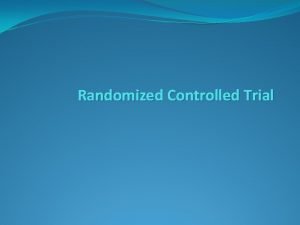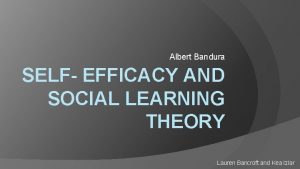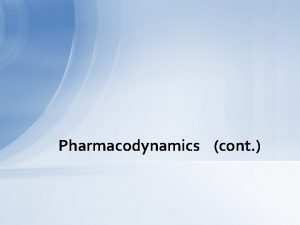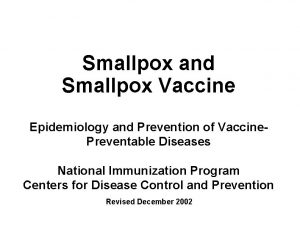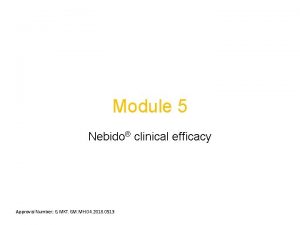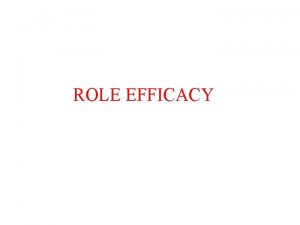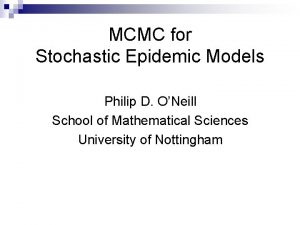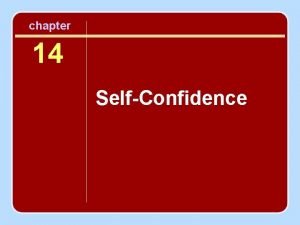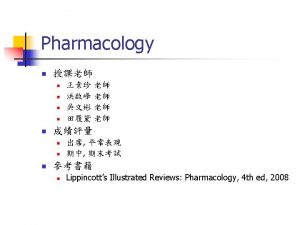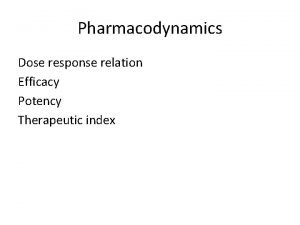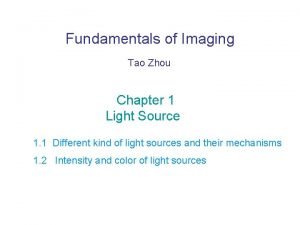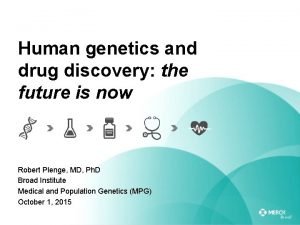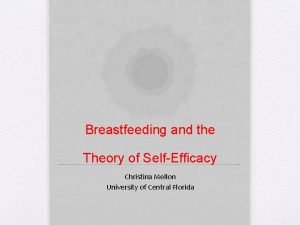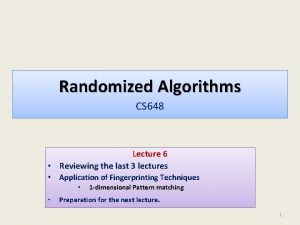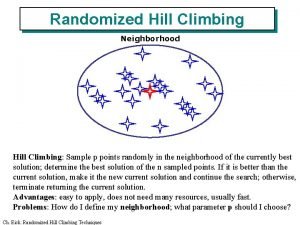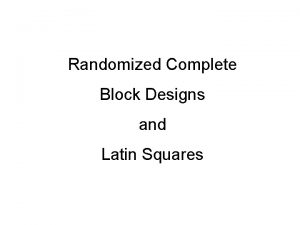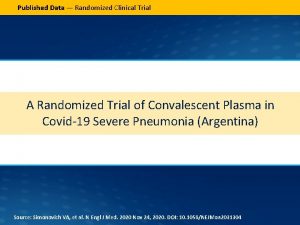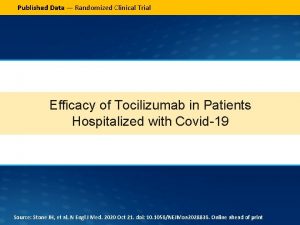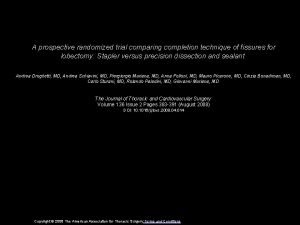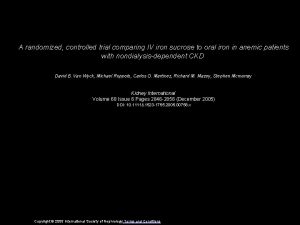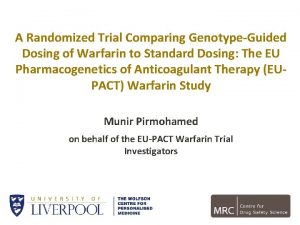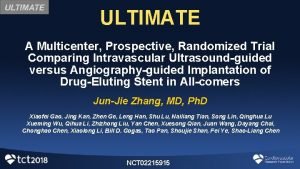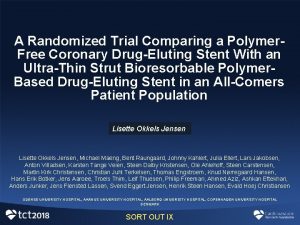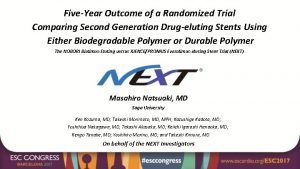Results from a randomized trial comparing the efficacy






















- Slides: 22

Results from a randomized trial comparing the efficacy of iron fortified rice with supplemental iron drops in infants and young children in Brazil. Mark Anthony Beinner 1 Milene Pessoa 1 Gustavo V. Melendez 1 Ted Greiner 2 1 School of Nursing and Nutrition Federal University of Minas Gerais Belo Horizonte, Minas Gerais, Brazil 2 Department of Food and Nutrition Hanyang University Seoul, South Korea

Presentation to XV Congreso LA SOCIEDAD LATINOAMERICANA DE NUTRICIÓN 14 -19 NOVEMBER 2009 SANTIAGO DE CHILE

Presentation Overview l l l Iron deficiency in children. Role of food fortification. Introduction to research trial in Brazil. Description of Ultra Rice. Findings and conclusions.

Iron Deficiency in Children l l l >50 -60% of children aged 6 -59 months are anemic in 11 developing countries in Africa, Asia and LAC (DHS, 2007). At least one-half of these children are irondeficient. Children need ten times more iron per body weight than adult men (1 mg/kg/day vs. 0. 1 mg/kg/day).

Potential Solutions Dietary education and diversification l l Educate public on benefits of iron-rich diets for children. Increase access to and dietary intake of iron-rich foods, particularly with high heme iron content. Supplementation l l Provide children with iron tablets dissolved in water, drops or syrups. Provide children multi-micronutrient supplements containing iron that can be sprinkled on complementary foods. Food fortification l Add iron to foods that children consume.

Study Area and Population Cohort l l Metropolitan region of Belo Horizonte, Minas Gerais, Brazil (pop. 315, 000). High population density, low income areas. Anemia prevalence is greater than 30% among young children (Monteiro et al. , 2000). An average of 74 to 76 kg of longgrain rice (208 g dry rice per day) is consumed per inhabitant per year (EMBRAPA, 2008).

What is Ultra Rice? l Food fortification technology developed by Bon Dente International and refined by PATH, an international nonprofit organization located in Seattle. l Rice flour fortified with micronutrients and stabilizing ingredients. l Extruded through pasta-making equipment that shapes it to resemble traditional rice. l Blended with locally obtained, traditional rice at a 2. 4: 100 ratio. l l Offers improved micronutrient retention over coating technologies, particularly resistance to rinsing losses. Results in no change in taste, smell or texture.

Can Staple Food Fortification Meet Young Children’s Iron Needs? Convention is that fortified staple foods cannot supply the daily amount of iron children need because foods need to be fortified at levels safe for the entire population, and young children do not consume enough of these foods to meet dietary requirements.

The Research Trial l l Randomized, double-blind “efficacy” trial compares iron-fortified Ultra Rice and placebo drops to supplemental iron drops (ferrous sulfate) and unfortified rice in children 6 -24 months old with hemoglobin concentrations between 80 and 110 g/L (Beinner, 2007). Trial supported by a grant from the Research Foundation of the State of Minas Gerais (FAPEMIG) in Brazil and in consultation with PATH; approved by the Ethics Committee at the Federal University of Minas Gerais.

The Use of Ultra Rice in the Research Trial l l Fortified with iron (micronized ferric pyrophosphate w/mean particle size of 3. 14 microns). Average daily consumption of rice by children was 40 g dry rice per day (100 g cooked). Ultra Rice provided an additional intake of 23. 4 mg Fe per day, an estimated 0. 47 mg of absorbed iron. The correct dose of the iron drops would provide a similar level of absorbed iron for a 10 kg child, 0. 061 mg.

Trial Profile Trial profile showing the number of participants randomly assigned, completing the trial, and analyzed for the primary outcome. UR = Ultra rice w/placebo iron drops; CR = Commercial rice group without iron and iron ferrous sulfate drops.

Randomized Groups No other instructions were given to improve complementary feeding practices or to mitigate potential side effects of the iron drops.

Baseline l l l Mean age, in months, was 13. 2 ± 4. 3 in UR group and 14. 4 ± 5. 2 months in CR groups. Boys represented 58. 3% of the UR group (URG) and 65. 9% of the CR group (CRG). The hemoglobin, ferritin and CRP and anemia rates of both groups were similar at baseline.

Table 1. Baseline characteristics of the children in the groups receiving iron from fortified rice (URG) and from drops (CG) 1 Treatment groups URG (n= 84) CG (n=91) 13. 2 ± 4. 3 14. 4 ± 5. 2 58. 3 65. 9 HAZ -0. 1 ± 1. 3 -0. 6 ± 1. 5 WAZ 0. 9 ± 0. 9 -0. 7 ± 0. 9 WHZ 1. 3 ± 0. 8 -0. 5 ± 0. 6 96 ± 8 Serum ferritin 2, µg/L 9. 6 ± 6. 5 8. 5 ± 4. 4 Serum C-reactive protein, mg/L 0. 2 ± 0. 2 Prevalence of iron deficiency 3, % 69. 1 76. 9 100. 0 Characteristics Age, y Boys, % Hemoglobin, g/L Prevalence of anemia 4, % 1 Mean ± SD unless noted otherwise. There were no significant differences between groups (Student’s t-test); 2 Geometric mean ± SD; 3 Iron deficiency is defined as SF < 12 µg/L (12); 4 Anemia is defined as Hb < 110 g/L (11).

Research Summary l l l Supervisors reported that 100% of children consumed both types of rice daily. 67% of URG and 66% of CRG reported giving placebo or iron drops, as instructed. Parents forgetting to give drops and/or fear of perceived side effects of the drops were the main reasons cited for not nonadherence. No reports of unacceptable tastes, color or smell of the Ultra Rice by trained subjects prior to study or by parents during the study; no apparent adverse health effects in either group.

Results l l Overall, prevalence of iron-deficiency decreased from 69. 1% to 25% in the UR group and 76. 9% to 52. 7% in the CR group; Prevalence of anemia decreased from baseline 100% in both groups to 61. 9% in the URG and 85. 6% in the CRG.

Table 2. Indicators of iron status in children receiving iron from rice (URG) or from drops (CRG)1 Treatment groups URG (n=84) CRG (n=91) Baseline 96 ± 0. 87 96 ± 0. 80 Final 106 ± 1. 1* 101 ± 0. 82* Mean difference 10 ± 0. 86 a 4. 8 ± 0. 40 b 9. 6 ± 0. 71 8. 5 ± 0. 47 Final 13. 9 ± 0. 60* 12. 1 ± 0. 74* Mean difference 4. 3 ± 0. 63** 3. 5 ± 0. 67 Indicator Hemoglobin, g/L Serum ferritin, µg/L Baseline 1 Values are arithmetic means ± SEM. Values with different letter superscripts are significantly different from each other (P < 0. 01) using a T-test for independent samples. *Defined as different from baseline value (P < 0. 01) using Paired-samples T-test. **Defined as different from control (P=0. 02) using the Mann-Whitney test (non-parametric).

The prevalence of iron deficiency (ID) and anemia in children who received fortified rice (URG, n = 84) or unfortified commercial rice with iron drops (CRG, n = 91). The interaction effect was significant for treatment between groups using t test and within groups using paired t test for both ID and anemia at 5 mo (P < 0. 01, both groups).

Conclusions l Traditional rice iron-fortified with Ultra Rice was shown to significantly improve iron status and reduce anemia among study participants and performed better than iron drops. l Research findings also suggest that the fortification of rice using micronized Fe. PP deserves to be considered as part of any strategy to control iron deficiency anemia in rice-consuming populations, even in young children, if they consume adequate quantities of rice.

Study References DHS. Demographic and Health Surveys. Micronutrient Update, 2007. Anemia in women and children in Latin America. Consulted on April 10, 2009: http: //www. measuredhs. com/ Beinner MA, et al. Effectiveness of Iron-Fortified Rice Compared to Supplemental Iron Drops in Children 6 -24 Months of Age in an Area in Southeastern Brazil. Unpublished report. State-funded project in Brazil (No. FAPEMIG EDT-3249/06); 2007. EMBRAPA. The Brazilian Agricultural Research Corporation. Brazil. Cultivo do Arroz Irrigado no Brasil. In Portuguese [The cultivation of irrigated rice in Brazil]. [cited 2008 Mar 10]. Available from: http: //sistemasdeproducao. cnptia. embrapa. br? Fontes. HTML/Arroz. Irrigado. Br asil/cap 18. htm. Monteiro CA, Szarfarc SS, Mondini L. Secular trnds in child anemia in São Paulo City, Brazil (1984 -1996). Rev Saude Publ. 2000; 34(6): 62 -72.


Thank you!
 Advantage of randomized controlled trial
Advantage of randomized controlled trial Albert bandura self-efficacy
Albert bandura self-efficacy Potency vs efficacy
Potency vs efficacy Drug efficacy
Drug efficacy Collective teacher efficacy
Collective teacher efficacy Self monitoring in organisational behaviour
Self monitoring in organisational behaviour Vaccine efficacy
Vaccine efficacy Nebidos
Nebidos Slidetodoc.com
Slidetodoc.com Collective teacher efficacy
Collective teacher efficacy Role efficacy
Role efficacy Vaccine efficacy
Vaccine efficacy Optimal confidence
Optimal confidence Efficacy potency
Efficacy potency Collective teacher efficacy
Collective teacher efficacy Potency vs efficacy
Potency vs efficacy Luminous efficacy comparison chart
Luminous efficacy comparison chart Drug efficacy
Drug efficacy Self-efficacy theory
Self-efficacy theory Randomized algorithm in daa
Randomized algorithm in daa Randomized hill climbing
Randomized hill climbing Duncan's multiple range test
Duncan's multiple range test Randomized algorithms and probabilistic analysis
Randomized algorithms and probabilistic analysis
